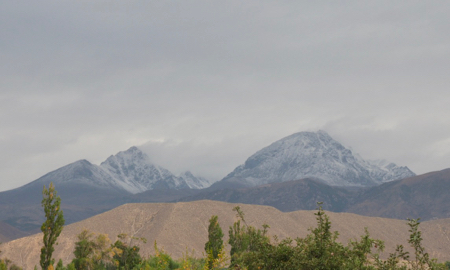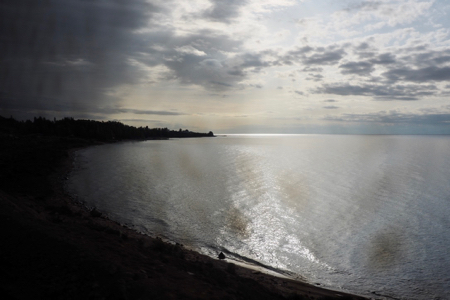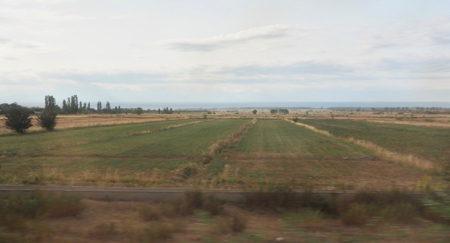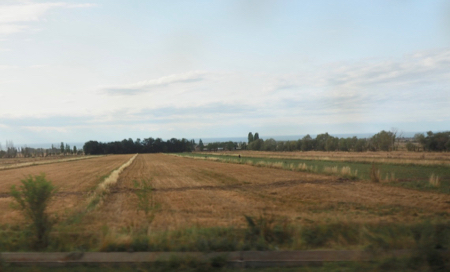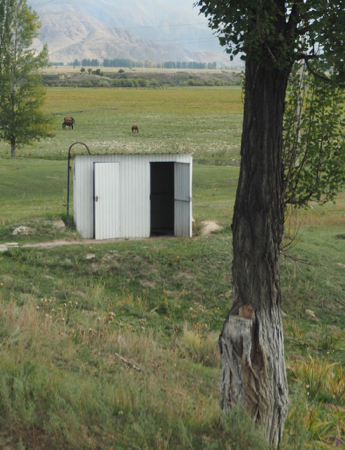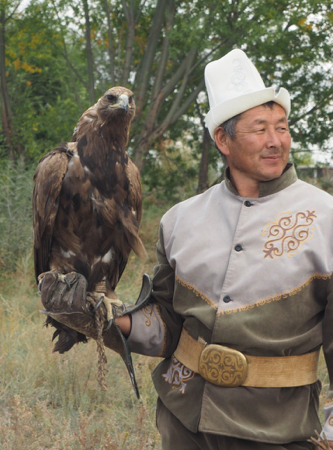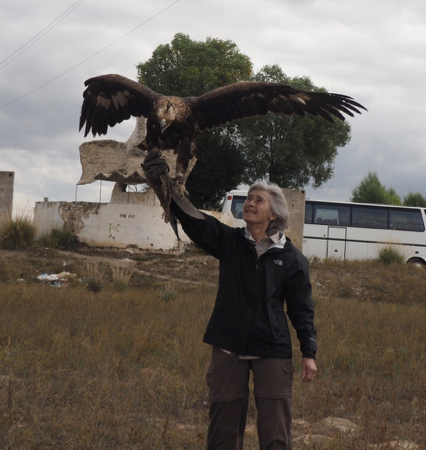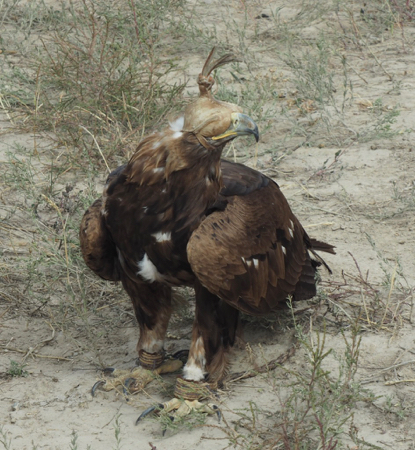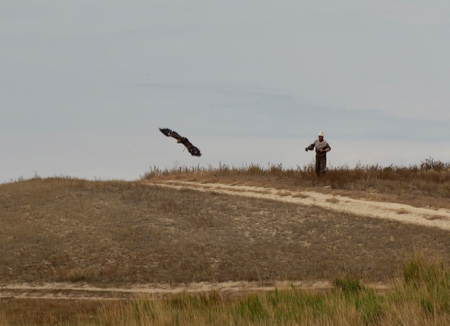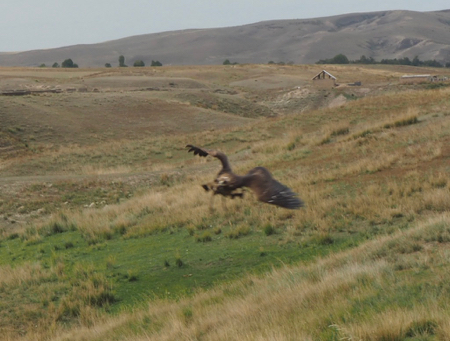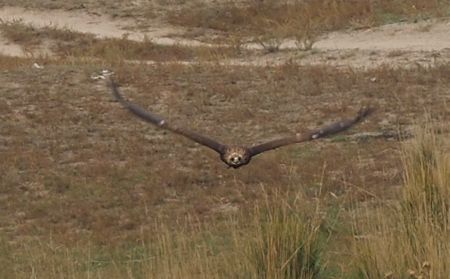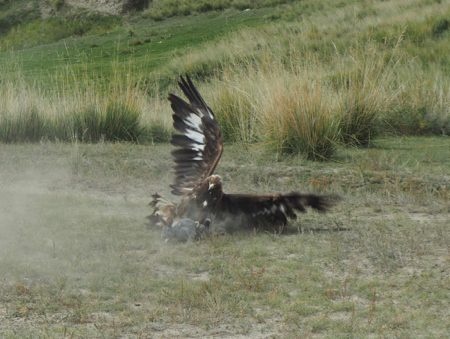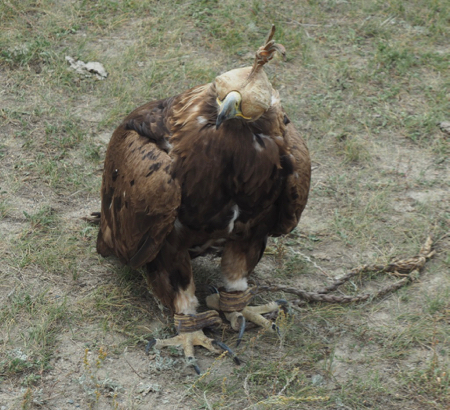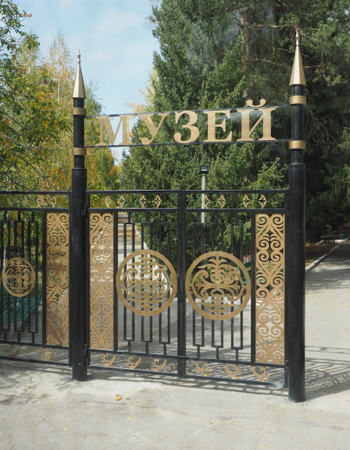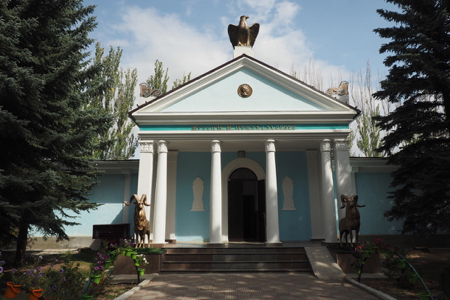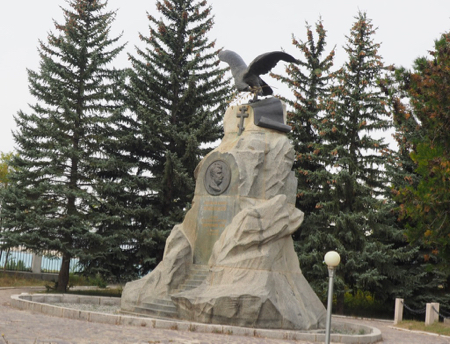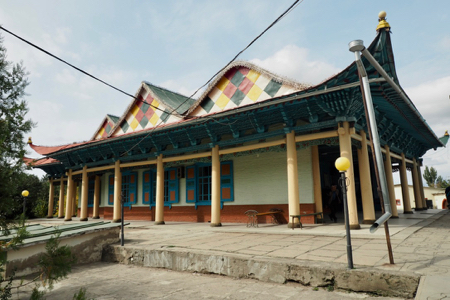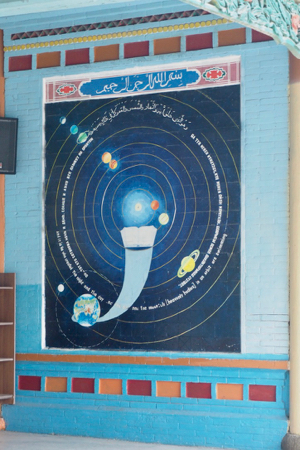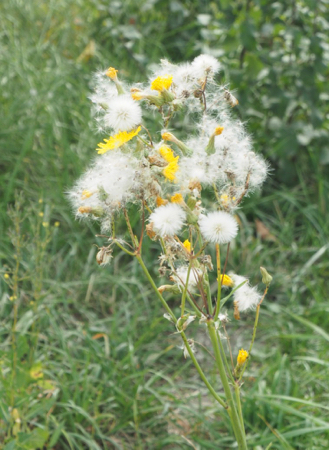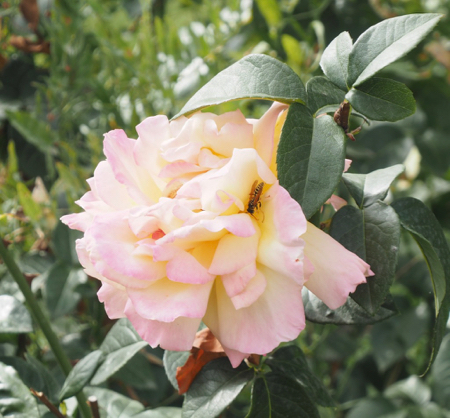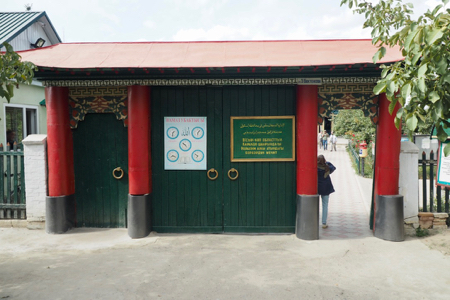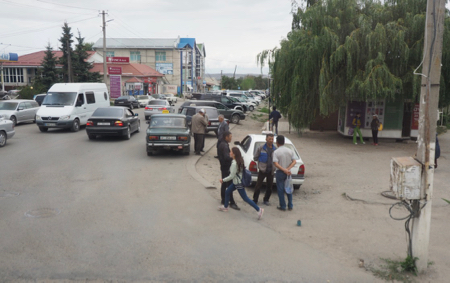Fri., 9/21/18 - Cholpon-Ata and Karakol
The bus ride today was to be 3 1/2 hours over bumpy roads to Karakol and back. Karakol is on the southern shore of the lake. We drove through many strip farms where the crops have been harvested: potatoes were plowed up to be picked up by hand; and cows, sheep, goats, and horses were grazing. We also saw several groups of wild turkeys.
Lake Issyk-Kul
Strip farm
Strip farm
Comfort stop
This just may be the most primitive "potty" we have ever encountered - very challenging, also.
Local women
We stopped near Karakol for a demonstration of eagle hunting. A man with his 3-year-old golden eagle, Tunuk (meaning transparent), met us in an open space in the fields. He is the fourth generation of his family to train and use eagles to hunt rabbits, fox, marmots, and small wolves. He goes out in rocky mountainous areas to find an eagle nest. He watches the nest until the chicks begin to feather and takes the female of the two chicks. After two weeks he begins to bond with the bird, lets it fly and come back to be fed. He keeps an eagle that is a successful hunter until she is 20-years-old when it is anxious to find a mate and then he releases her into the wild.
We all had our pictures taken holding the 12-pound bird. Then he released a live rabbit and let Tunuk fly after it and hold it in her claws. The trainer rewarded the eagle with chunks of raw meat. I was fascinated by the leather hood put on her head to cover her eyes. It was a fascinating demonstration.
Eagle hunting location
Tunuk and his handler
Gale and Tunuk
Gale and Tunuk
Tunuk
Getting ready to demonstrate Tunuk's hunting ability
Sergei holding the prey (a rabbit)
Off he goes
In flight
Coming at you
Gottcha!
Saving the rabbit
Tunuk spreading his considerable wings
Tunuk
In Karakol we visited the grave, memorial, and museum of Russian Nikolai Przhevalskiy who traveled around Central Asia to study the culture and traditions of the many tribes or inhabitants. He mapped the area, noted the animals and plants and the native horses. The horses he first found have been named after him - Przewalski’s horse (one of many spellings). He died in 1888 of Typhus and wanted to be buried by Issyk-Kyl Lake and identified only as “Traveler.”
Entrance
Museum
Mountain sheep
Memorial
Grave of Nikolai Przhevalskiy
On the way back to our Soviet “resort” we stopped to take pictures of a Dungan mosque built by Chinese Moslems. It looks like a Chinese pagoda from the outside.
Dungan Mosque
Dungan symbolism
Dungan Mosque
Entrance to the Dungan Mosque
Street scene
| Return to Top | Return to Itinerary | Return to Trips page to view other trips | Return to Dreamcatcher Home Page |

